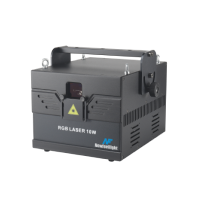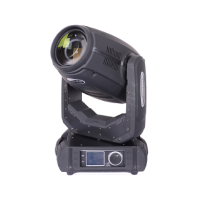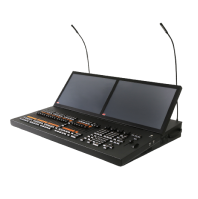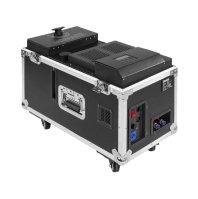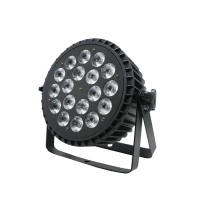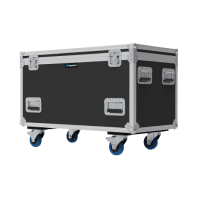- What is ILDA?
- Understanding Laser Light Programming Basics
- Getting Started with ILDA Programming
- Step-by-Step Guide to Programming Laser Lights
- Software Spotlight: Pangolin’s Quickshow
- Hardware Options: Pangolin FB3 and FB4

Master Laser Light Shows with ILDA Programming and Laser Systems
by Newfeel Lighting on Nov 14, 2024
Table of Contents
Laser light shows have taken the entertainment industry by storm, offering stunning displays of color, movement, and creativity. From concerts and festivals to corporate events and nightclubs, laser lights enhance the visual experience, leaving audiences mesmerized. If you’ve ever wondered how to create your own laser light show, this guide will introduce you to the world of laser programming using ILDA (International Laser Display Association) standards.
What is ILDA?
Before diving into programming, let’s first explore what ILDA means. The International Laser Display Association (ILDA) is a non-profit organization founded in 1986 to standardize the use of laser display systems. ILDA has developed a set of guidelines for laser show systems, allowing equipment from different manufacturers to work together seamlessly. The ILDA File Format Standard defines how laser show data is stored and transmitted, making it possible to control laser projectors and software across various platforms.
ILDA has played an essential role in shaping laser light technology and ensuring that different equipment types are compatible. If you're new to programming laser lights, understanding ILDA standards will be crucial for setting up and operating your laser systems.
Understanding Laser Light Programming Basics
Laser lights are not just beams of color; they are carefully programmed visual effects that rely on several components. To get started with laser light programming, it's essential to understand the basic elements of a laser show system:
Laser Projector: The hardware that emits the laser beams.
Scanning System: A mechanism of mirrors that directs the laser beam to create patterns and shapes on surfaces.
Control Interface: A hardware device that connects your computer to the laser projector.
Software: Programs that allow you to create, edit, and control laser animations.
Laser effects generally fall into three categories:
Beams: Single points of light used to create aerial effects.
Graphics: Two-dimensional shapes, symbols, and logos.
Animations: Moving graphics and complex sequences.
These categories form the foundation for programming your laser light show and creating immersive experiences.
Getting Started with ILDA Programming
To program laser lights using ILDA standards, you'll need the following tools:
1.Laser Projector: Ensure it’s ILDA-compatible.
2.ILDA-Compatible Control Interface: Devices like Pangolin’s FB3 or FB4 are commonly used.
3.Laser Show Software: Popular choices include Laser Systems software like Quickshow, which is easy to use and powerful for creating professional lazer show displays.
4.Computer: To run the software and control the laser show.
Make sure you're working in a safe, controlled environment. Laser lights can be dangerous if not used properly, so use appropriate eye protection, avoid direct exposure to the laser beam, and ensure adequate ventilation for your equipment.
Step-by-Step Guide to Programming Laser Lights
1. Creating Basic Shapes and Patterns
Start by exploring the software interface. Most programs come with pre-made shapes and patterns to get you started. Choose simple shapes like circles, squares, or lines to familiarize yourself with the controls.
2. Adding Color and Movement
Next, experiment with color mixing. ILDA-compatible systems typically support RGB color mixing, allowing you to create a broad range of colors. Afterward, try adding movement to your shapes. You can rotate, scale, or change the position of your patterns to create dynamic visuals in your laser light show.
3. Timing and Synchronization
Timing is key in laser shows, especially when syncing with music. Use the timeline feature in your software to sequence your effects, and try importing music tracks to sync your laser light effects to the beat. This will create a more immersive experience for the audience.
4. Creating Complex Animations
As you get more comfortable, start combining multiple shapes and effects. Layer different animations, adjust opacities, and experiment with more intricate patterns to create complex lazer show displays.
5. Incorporating Music and Sound
One of the most exciting features of laser programming is the ability to sync your laser lights with music. Many software programs offer audio-reactive features, allowing your laser effects to change and move with the rhythm and tempo of the music. This synchronization adds an interactive layer to your laser show, enhancing the overall experience.
Software Spotlight: Pangolin’s Quickshow
Pangolin Laser Systems is a leading provider of laser show technology, and their Quickshow software is an excellent option for beginners and professionals alike. It’s packed with features that simplify laser programming, yet it’s powerful enough for professional use.
Key Features of Quickshow:
Cue List: Organize your show into segments that can be triggered at will.
Timeline Editor: Sequence your laser beam effects with precision and timing.
Live Control: Adjust parameters during the show in real-time.
Safety Features: Built-in tools to ensure that your laser show complies with safety standards.
Getting Started with Quickshow:
1.Connect your FB3 or FB4 interface to your computer and laser projector.
2.Launch Quickshow and create a new project.
3.Browse the shape library and drag elements onto your workspace.
4.Use the property panel to adjust the size, color, and movement of your laser light effects.
5.Arrange your effects on the timeline and preview your laser show.
Quickshow provides everything you need to create stunning laser light shows, whether you’re programming for a small venue or a large event.
Hardware Options: Pangolin FB3 and FB4
Pangolin’s FB3 and FB4 are two popular ILDA-compatible control interfaces:
FB3: A compact, versatile option perfect for small to medium setups.
FB4: Designed for larger, more advanced setups with higher scan rates and more features.
Both interfaces connect to your laser projector via ILDA cables and communicate with your software, allowing precise control over your laser beam effects.
Exporting and Using Your Programmed Shows
Saving and Exporting Projects
Once you’ve created your laser light show, save your project regularly. Most laser show software lets you export your show in the ILDA file format (.ild), making it compatible with other laser systems.
Uploading to SD Cards for Standalone Operation
Many modern laser projectors support SD card playback. To use your laser light show in standalone mode:
1.Export your show in the correct format.
2.Copy the files to an SD card.
3.Insert the SD card into your projector.
Direct Control from a Laptop
For live performances, you can connect your laptop directly to the FB3/FB4 interface for real-time control. This gives you dynamic control over your laser show during performances, making it easy to adapt to the crowd or music.
ILDA Compatible Laser Lights
When choosing laser lights for programming, it's important to select an ILDA-compatible system. For instance, the Newfeel Laer NF660 programmable laser projector offers powerful, captivating effects, and is designed for DJs, clubs, and events. It’s a cost-effective option for performers looking to create spectacular lazer show experiences.
Conclusion
Programming laser lights using ILDA standards opens up a vast world of creativity. While it may seem complex at first, with practice, you'll be able to create mesmerizing laser light shows that captivate any audience. Focus on mastering the basics, experimenting with effects, and synchronizing with music to take your laser shows to the next level.
Remember, safety always comes first when working with laser projectors. Always comply with laser safety regulations, and don’t hesitate to seek out the ILDA community for support and inspiration. With the right tools and knowledge, you’ll soon be creating unforgettable lazer show performances that push the boundaries of visual entertainment.


